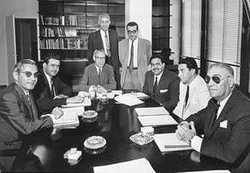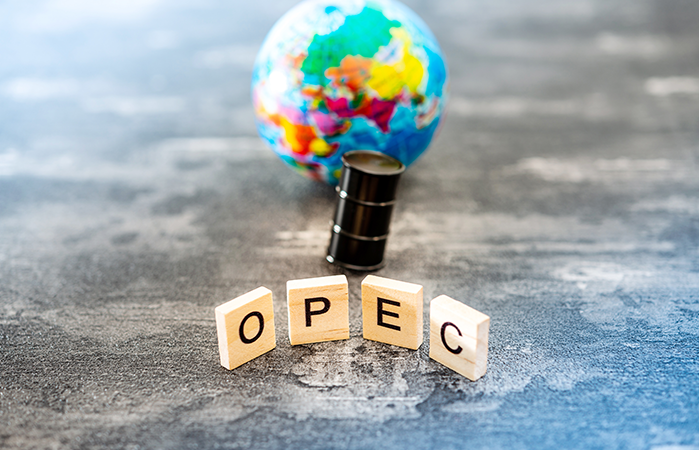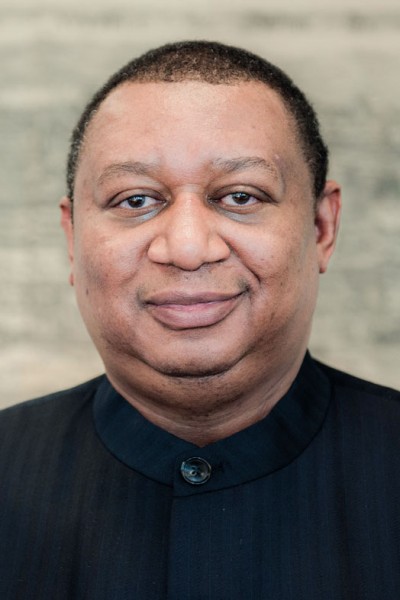OPEC Group - the cartel of oil producers and its history
OPEC is one of the most famous international organizations. It is associated with an organization of oil producing countries. However, this is only part of the truth. Not all oil producers are members of OPEC. It is true, however, that an organization works like a cartel. A cartel is an agreement or practices agreed by two or more competitors. A cartel agreement is aimed at coordinating activities in such a way that they translate into shaping the supply or demand for a given good. In the case of OPEC, the cartel coordinates the production of crude oil.
What is OPEC
 OPEC stands for Organization of the Petroleum Exporting Countrieswhich in translation means Organization of Petroleum Exporting Countries. OPEC is over 60 years old. Its origins date back to 1960, when five countries established this organization in Baghdad, Iraq. In the beginning, there were four countries in Asia Minor and one country from South America. They were: Iran, Iraq, Kuwait, Saudi Arabia and Venezuela. Interestingly, 4 of the 5 founding countries later went to war with each other. In the years 1980 - 1988, the war between Iraq and Iran was in progress, and soon after that Iraq invaded Kuwait (1990), which resulted in an international reaction of the so-called First Gulf War (Saudi Arabia was also part of the grand coalition). As you can see, the OPEC organization was not a unitary political bloc, but only a cartel keeping an eye on oil prices.
OPEC stands for Organization of the Petroleum Exporting Countrieswhich in translation means Organization of Petroleum Exporting Countries. OPEC is over 60 years old. Its origins date back to 1960, when five countries established this organization in Baghdad, Iraq. In the beginning, there were four countries in Asia Minor and one country from South America. They were: Iran, Iraq, Kuwait, Saudi Arabia and Venezuela. Interestingly, 4 of the 5 founding countries later went to war with each other. In the years 1980 - 1988, the war between Iraq and Iran was in progress, and soon after that Iraq invaded Kuwait (1990), which resulted in an international reaction of the so-called First Gulf War (Saudi Arabia was also part of the grand coalition). As you can see, the OPEC organization was not a unitary political bloc, but only a cartel keeping an eye on oil prices.
Not surprisingly, the main goal of the organization is to coordinate the level of oil production by members of the cartel to ensure the profitability of its production. However, it should be remembered that each country has a different political interest and a different structure of budget revenues and expenses. For this reason, OPEC decisions are always more or less a compromise between cartel members. For this reason, meetings of OPEC members are very important for those investing or speculating in the oil market. A greater than expected reduction in oil production may cause a rise in prices. In turn, the lack of agreement on the production limits may lead to a sharp sell-off of this energy raw material.
OPEC group members
Since 1965, the headquarters of the organization has been in Vienna. Interestingly, Austria is not a member of OPEC. This country was chosen, among others due to its political neutrality.
OPEC was not a closed club of founding members. More members joined the organization over the years. During the first two years of the organization's operation (1960-1962), the cartel was enlarged by three more countries: Qatar, Indonesia and Libya. The period 1967-1975 was the next wave of the organisation's growth. At that time, countries such as the United Arab Emirates (1967), Algeria (1969), Nigeria (1971), Ecuador (1973) and Gabon (1975) joined OPEC. More countries joined the organization in the 2007st century. They were Angola (2017), Equatorial Guinea (2018) and Congo (XNUMX).
However, many members were not in the OPEC organization all the time. It is worth citing a few examples. One of the most hesitant was Ecuador, which suspended its membership in December 1992. However, as oil prices soared, the country reactivated membership in October 2007. After less than 13 years, Ecuador withdrew from membership in the organization on January 1, 2020. Indonesia has also changed its status in the organization many times. Low oil prices in 2009 prompted Indonesia to suspend membership, but re-joined OPEC after 7 years. The time inside the organization did not last long because after 10 months Indonesia decided to suspend its membership in OPEC again. In 1995-2016, he did not participate in cartel meetings in the organization's meetings. In turn, Qatar ended membership on January 1, 2019.
Currently, the OPEC organization consists of thirteen members, which are:
- Algieria
- Angola
- Saudi Arabia (de facto leader of the organization)
- Gabon
- Equatorial Guinea
- Iran
- Iraq
- Kuwejt
- Libya
- Nigeria
- Republic of the Congo
- Venezuela
- United Arab Emirates.
The OPEC organization divides its participants into "Founding members" and "Full members". According to OPEC status, any country that is a net oil exporter can be members of the organization. The condition is acceptance by ¾ "full members" and by all "founding members". The status also allows countries to join as "Association members"however, the powers of such members are much more limited.
The organization also elects its Secretary General. He has been performing this role since 2016 Mohammad barkindo (elected in 2019 for another 3-year term). Mohammad represented Nigeria in OPEC between 1993 and 2008.
OPEC Fund
 This is another "branch" of the OPEC organization. It was founded in 1976. The OPEC Fund currently consists of 12 member countries, including: Algeria, Ecuador, Gabon, Indonesia, Iraq, Iran, Kuwait, Libya, Nigeria, Saudi Arabia, the United Arab Emirates and Venezuela. The purpose of the fund is to improve the quality of life and care for sustainable economic and social development. Projects financed by the OPEC Fund relate to both infrastructure and improving the quality of human capital. The OPEC Fund seeks to support the solidarity of the "southern countries", in particular the world's least developed countries. The fund raises capital mainly as a result of voluntary contributions from "full members" and the fund's investments (loans, equity investments). By the end of March 2020, the OPEC Fund allocated a total of USD 25 billion to the development of less developed countries. Funded over 4000 projects. The value of projects co-financed by the fund exceeded $ 190 billion.
This is another "branch" of the OPEC organization. It was founded in 1976. The OPEC Fund currently consists of 12 member countries, including: Algeria, Ecuador, Gabon, Indonesia, Iraq, Iran, Kuwait, Libya, Nigeria, Saudi Arabia, the United Arab Emirates and Venezuela. The purpose of the fund is to improve the quality of life and care for sustainable economic and social development. Projects financed by the OPEC Fund relate to both infrastructure and improving the quality of human capital. The OPEC Fund seeks to support the solidarity of the "southern countries", in particular the world's least developed countries. The fund raises capital mainly as a result of voluntary contributions from "full members" and the fund's investments (loans, equity investments). By the end of March 2020, the OPEC Fund allocated a total of USD 25 billion to the development of less developed countries. Funded over 4000 projects. The value of projects co-financed by the fund exceeded $ 190 billion.
The impact of OPEC on the price of crude oil
The cartel's actions can have an impact on oil prices. If the OPEC countries decide to reduce crude oil production, then under normal conditions (relatively stable demand), the price of crude oil should go up. This is because, at a lower price, there is an excess of demand over supply, causing the price to rise. Oil investors should be very careful about OPEC announcements. If an organization reports an increase in production that is higher than market expectations, then this may translate into a decrease in prices, as the increase in supply will put pressure on the price reduction. Another issue is the demand for the raw material. If the demand for demand decreases, then OPEC tries to limit production in order to keep the price at the same level.
GUIDE: HOW TO INVEST IN PETROLEUM?
It must be remembered that the integrity of cartel members and the willingness to reach a compromise are key. However, OPEC affects only the level of supply, but not the magnitude of demand. It is worth mentioning that the OPEC countries do not control the entire supply of this raw material. According to data provided by the organization. In 2018, the countries associated with this organization controlled 44% of global production and had about 82% of confirmed, global reserves of this raw material. For this reason, in order to have a greater influence on oil price developments, OPEC sometimes needs to "get along" with other oil-exporting countries. For this reason, oil producers often hold talks with the OPEC + formula, which also associates other oil producers (eg Russia, Kazakhstan or Norway). This is to allow for better coordination of oil production, which increases the chances of successful oil price maintenance operations. An example is the OPEC + communiqué from April 2020, when the announcement of a 10% reduction in production translated into a rapid increase in Brent crude oil prices by 2,5%.
OAPEC countries
It also exists OAPEC organizationwhich is short for Organization of Arab Petroleum Exporting Countries. So it is the Organization of Arab Petroleum Exporting Countries. The organization was established to protect the interests of Arab states. OAPEC was established in 1968 and its headquarters is in Kuwait. It is commonly known as the "Arabic" OPEC.
The Organization of Arab Petroleum Exporting Countries was established a bit later than OPEC, in 1968. From the very beginning, its headquarters are in Kuwait. Some countries belong to both OPEC and OPAC. They are: Algieria, Saudi Arabia, Iraq, Kuwait, Libya i United Arab Emirates. Other OAPEC countries include: Bahrain, Egypt, Qatar i Syria.
The organization's greatest success was in bringing about the first oil crisis. In 1973, Arab members of OPEC (who were still members of OAPEC) decided to stop exporting oil to countries supporting Israel in the Yom Kippur war. It hit countries like the United States, Western Europe and Japan. The supply constraint led to a sharp rise in oil prices. The era of cheap access to this raw material has ended.
Summation
Nowadays, a modern economy cannot function without oil. For this reason, the price of crude oil may translate into production costs in many industries. This does not only apply to the oil industry (upstream, downstream), but also the results of the aviation and logistics industry. At the same time, an increase in crude oil prices may be one of the factors accelerating inflation (rising production and transport costs may translate into higher prices of products or services). It is true that the world is currently trying to move away from oil consumption, but it is a slow process. So it is not surprising that many people are closely watching the decisions made by OPEC. It is this organization that is one of the most famous cartels in the economic history of the world. Currently, it associates 13 countries located in Asia, Africa and South America. Within this organization there is also the OPEC Fund, which tries to support the least developed countries in the world.






















![Forex Club – Tax 9 – Settle tax on a foreign broker [Download the Application] Forex Club - Tax 9](https://forexclub.pl/wp-content/uploads/2024/02/Forex-Club-Podatek-9-184x120.jpg?v=1709046278)
![Trading View platform – solutions tailored to the needs of traders [Review] trading view review](https://forexclub.pl/wp-content/uploads/2024/03/trading-view-recenzja-184x120.jpg?v=1709558918)
![How to connect your FP Markets account to the Trading View platform [Guide] fp markets trading view](https://forexclub.pl/wp-content/uploads/2024/02/fp-markets-trading-view-184x120.jpg?v=1708677291)
![How to invest in ChatGPT and AI? Stocks and ETFs [Guide] how to invest in chatgpt and artificial intelligence](https://forexclub.pl/wp-content/uploads/2023/02/jak-inwestowac-w-chatgpt-i-sztuczna-inteligencje-184x120.jpg?v=1676364263)


![WeWork – the anatomy of the collapse of a company valued at $47 billion [WeWork, part II] wework bankruptcy story](https://forexclub.pl/wp-content/uploads/2024/04/wework-bankructwo-historia-184x120.jpg?v=1711729561)
![Adam Neumann – the man who screwed up Softbank [WeWork, part AND] adam neumann wework](https://forexclub.pl/wp-content/uploads/2024/04/adam-neumann-wework-184x120.jpg?v=1711728724)





![How to transfer shares to another brokerage office [Procedure description] how to transfer shares to another brokerage house](https://forexclub.pl/wp-content/uploads/2024/03/jak-przeniesc-akcje-do-innego-biura-maklerskiego-184x120.jpg?v=1709556924)

![The most common mistakes of a beginner trader - Mr Yogi [VIDEO] Scalping - The most common mistakes of a beginner trader - VIDEO](https://forexclub.pl/wp-content/uploads/2024/03/Scalping-Najczestsze-bledy-poczatkujacego-tradera-VIDEO-184x120.jpg?v=1711601376)
![Learning patience: No position is also a position - Mr Yogi [VIDEO] Scalping - Learning patience - No position is also a position - VIDEO](https://forexclub.pl/wp-content/uploads/2024/03/Scalping-Nauka-cierpliwosci-Brak-pozycji-to-tez-pozycja-VIDEO-184x120.jpg?v=1710999249)
![When to exit a position and how to minimize losses - Mr Yogi [VIDEO] Scalping - When to exit a position and how to minimize losses - VIDEO](https://forexclub.pl/wp-content/uploads/2024/03/Scalping-Kiedy-wyjsc-z-pozycji-i-jak-minimalizowac-straty-VIDEO-184x120.jpg?v=1710336731)


















